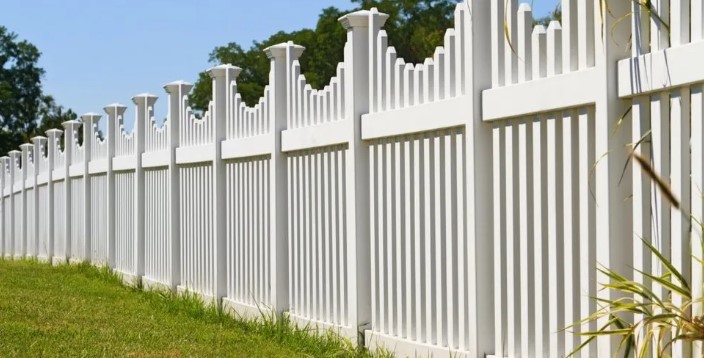
A timber fence provides a timeless option for enhancing privacy, by securing your property and enhancing its visual attractiveness. When constructed with precision and care it can survive for years, combining functionality with natural beauty. Follow these straightforward steps to craft a fence that resists wear and complements your surroundings.
Why Choose Timber for Your Fence?
Timber remains a preferred material for fencing due to its versatility, cost-effectiveness and ability to match well with various landscapes.
With proper preparation and careful installation, timber fences offer durability and charm. They adapt well to a range of designs by making them suitable for both contemporary and traditional settings.
Planning Your Timber Fence
1. Understand Your Needs
Identify the primary function of your fence. Will it shield your home from prying eyes, secure your property, or enhance its appearance? Defining your purpose helps determine the materials and layout that fit your vision.
2. Check Regulations
Research local regulations and property line requirements. Confirm height restrictions, design guidelines, and any permits needed. This preparation ensures compliance and prevents future disputes.
3. Mark the Boundary
Pinpoint the exact location for the fence. Use a measuring tape, stakes, and string to outline the boundary. Accurate marking prevents encroachment and sets a solid foundation for the building.
Selecting the Right Materials
1. Choose Quality Timber
go for treated wood that is designed to handle decay, pests, and moisture. Hardwoods like oak or teak deliver outstanding durability while softwoods such as pine are easier to work at lower cost. Make sure the wood has a label showing it is safe for outdoor use. The quality of the timber also matters if you plan to complement the look with timber flooring in nearby spaces.

2. Pick the Right Fasteners
Invest in galvanised or stainless steel fasteners. These resist rust and maintain the structural integrity of your fence over time.
Tools You’ll Need
Equip yourself with the following tools for efficient construction:
- Post hole digger: This tool helps you to dig deep even holes for the fence posts by ensuring the structure is stable and properly aligned.
- Spirit level: Use a spirit level to check the vertical and horizontal alignment of posts and rails. Proper alignment not only enhances the fence’s appearance but also its structural integrity.
- Hammer or drill: A hammer or power drill helps secure rails and panels firmly. Choose a drill for efficiency and precise fastening, especially when working with dense timber.
- Measuring tape: Accurate measurements prevent errors and ensure uniform spacing between posts and panels. This tool is vital for maintaining consistency throughout the project.
- Saw: A saw helps cut timber to the required lengths. Use a hand saw for small adjustments or a power saw for cutting through larger pieces quickly.
- Shovel: A sturdy shovel clears debris and prepares the ground for digging. It also assists in spreading gravel or soil for better post support.
- String line: Stretch a string line along the fence boundary to guide the placement of posts and panels. This simple tool ensures straight and visually appealing alignment.
- Concrete mix: A concrete mix secures the posts firmly in the ground. It adds weight and stability, preventing the fence from shifting over time.
Step-by-Step Guide to Building Your Timber Fence
1. Prepare the Area
Clear the construction area of obstructions such as rocks, roots, and vegetation. Create a level surface to establish a firm and stable foundation. If the terrain slopes, design the fence to incorporate stepped panels for a uniform appearance.
2. Install the Fence Posts
Fence posts act as the backbone of your structure. Follow these steps to position them correctly:
- Dig post holes to one-third the height of the post. For instance, a 6-foot post requires a 2-foot hole.
- Maintain consistent spacing between the holes, typically 2 to 3 metres apart.
- Add gravel to the base of each hole for improved drainage.
- Position the post, ensure it stands upright using a spirit level, and pour concrete around it. Let the concrete cure for at least 24 hours before proceeding.
3. Attach Rails
Fix horizontal rails between the posts to form the frame for your panels or pickets. Secure one rail near the top and another near the bottom of the posts. For additional reinforcement, add a middle rail. Use sturdy brackets or screws to anchor them firmly.
4. Fix the Panels or Pickets
Once the rails are in place, attach the timber panels or pickets:
- For panels, align them with the rails and screw them securely in place. Ensure they remain level throughout.
- For pickets, measure equal gaps and mark their positions. Attach each picket individually for a consistent and polished look.
5. Add Finishing Touches
Enhance your fence’s longevity and appearance with the following steps:
- Apply a weather-resistant stain or paint. This safeguards the wood against moisture and sunlight.
- Install caps on top of the posts to prevent water infiltration and decay.
- For properties with outdoor timber flooring, think about matching the stain or colour to achieve a unified look.
Tips for Ensuring Durability
1. Regular Maintenance
Inspect your fence periodically for signs of wear, such as loose boards or damage. Address these issues promptly to preserve the structure.
2. Seal the Timber
Seal the wood every few years to block moisture and reduce the risk of rotting. Use a high-quality sealant designed for outdoor timber.
3. Trim Vegetation
Keep plants and bushes away from the fence. Overgrown vegetation can trap moisture, which accelerates wood decay.
4. Prevent Ground Contact
Ensure the timber panels remain elevated above the ground. This reduces exposure to moisture and pests.
Common Mistakes to Avoid
Neglecting Post Stability: Posts that are not deeply embedded or adequately secured will cause the fence to lean or collapse.
- Using Inferior Timber: Untreated or poorly treated wood will deteriorate quickly.
- Ignoring Alignment: Uneven placement compromises both the appearance and strength of your fence.
Cost-Saving Tips
Repurpose timber from other projects.
Purchase materials in bulk to lower costs.
Borrow or rent tools instead of buying them outright.
Conclusion
Building a wooden fence takes effort and care but it can make your property look great. So plan well, choose strong materials, and build it properly to make sure it stays for a long time. Keep it well-maintained and your fence will stay strong and nice to look at for years.
Also Check: Top Benefits of Wood Decking for Outdoor Living Spaces




